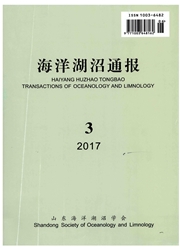

 中文摘要:
中文摘要:
试验以大杂交鲟(达氏鳇♀×史氏鲟♂,初始体质量约38g/尾)为实验材料,研究了流水条件下养殖密度(40尾/m^2、70尾/m^2、93尾/m^2、110尾/m^2)对其生长和摄食的影响,同时监测了4个密度池水质情况。结果表明:经过60d养殖,大杂交鲟特定生长率、日增重及摄食率等均随密度的增大而降低,而食物转化率和净增重随密度的增大而显著增大;试验期间各密度组水温,pH值,氨态氮及化学耗氧量等差异不显著,而DO随着密度的增大及鱼个体生长呈现显著下降趋势。试验结果表明低密度(40尾/m^2)组具有最大的生长效率,随着密度的增大生长率下降;过高的养殖密度不仅不利于鱼体健康并且造成饲料浪费,增加了养殖成本。在流水池塘养殖鲟鱼中溶解氧是最重要的影响因素之一,溶解氧高于5mg/L可能是大杂交鲟生长摄食的临界值。
 英文摘要:
英文摘要:
This study focused on the subject of hybrid sturgeon, the development and feeding changes of hybrid sturgeon who's initial average weight was 38g in four different culture densities (40/m^ 2, 70/m^2 , 93/m^2, and 110/m^2) on the running water environment were studied, the water qualities relate to the four different densities were also examined. The results showed: after 60 days experiment span, the specific growth rate, daily weight gain and feeding efficiency decreased as the density increased, the food conversion efficiency and the net weight increases as the density increases. The changes of water temperatures, pH, ammoniacal nitrogens and COD in different density groups were not significant, and DO decreased as the density increased and fish grew. This suggested that high culture density could lead to pond water quality deterioration, so as to threaten fish growth, especially the decrease of OI) and the increase of COD and ammoniacal nitrogen.
 同期刊论文项目
同期刊论文项目
 同项目期刊论文
同项目期刊论文
 期刊信息
期刊信息
